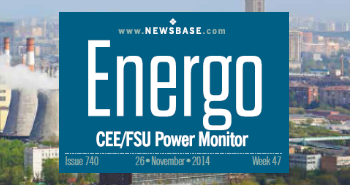Ukraine winter preparations in final stage with a month to go

With a month to go before the heating season starts, Prime Minister of Ukraine Denys Shmyhal says preparations for the upcoming cold season are in their final stages, Interfax Ukraine reported on September 13.
This season will be the second winter since the full-scale war started. Kyiv is anticipating a renewed attack on its power and heating infrastructure as Russia attempts to use the cold and the dark as weapons in the war, Shmyhal said.
Shmyhal highlighted key aspects of Ukraine's preparations in a presentation to the Rada. Currently, seven nuclear power plants (NPPs) have undergone repairs, with an additional two scheduled to be operational before the heating season commences. This will bring the total nuclear capacity to 7.8 GW.
Ukraine has a total of four functioning NPPs in addition to Chernobyl, which remains permanently offline since the disaster in the 1980s. Zaporizhzhia is the easternmost reactor and the biggest in Europe but has been caught up in the fighting after it was attacked in a “night that could have stopped the history of Ukraine and Europe”, Ukrainian President Volodymyr Zelenskiy said at the time in March last year.
However, the other three functioning reactors – South Ukraine, Khmelnytskyi and Rivne – are in the west of the country and on the opposite side of the Dnieper river, which marks the westernmost boundary for the Russian occupying forces.
Shmyhal said the Rivne NPP, close to the Polish border, has received nuclear fuel from the Westinghouse company, reducing its reliance on Russian fuel, which still dominates the market, and enhancing energy independence.
The Ministry of Energy has committed to ensuring that 25 power units will be operational, providing the energy system with 4.5 GW of power before the heating season starts. Extensive equipment repairs have been completed, with ongoing intensive repairs expected to meet deadlines.
Russia launched a campaign of destruction at power plants last year that plunged Kyiv into darkness several times, but Ukraine’s leading energy companies have been working overtime and report that almost all the damage has since been repaired.
Shmyhal mentioned that repairs and maintenance have been carried out on hydroelectric power plants (HPPs), with 804 MW of the planned 1.7 GW of additional capacity already integrated into the system. Additionally, preparations have extended to boiler houses, heating networks, central heating stations, residential buildings, schools, kindergartens and hospitals. The aim is to reach 100% readiness within a month, the Kyiv Independent reported.
The prime minister also stressed the importance of protecting strategic energy facilities, with serious and systematic work in progress to secure critical infrastructure in the fuel and energy sector. The government has allocated additional funds and intends to improve and extend its air defence system to protect the main generating capacity from missile attacks.
Shmyhal reassured the public that gas, heat and hot water prices will remain unchanged until the end of the heating season.
The prime minister did not go into details of gas storage adequacy. Currently Ukraine’s gas tanks are 33.6% full as of September 13, holding circa 10bn cubic metres of gas.
Ukraine produces approximately 20 bcm of gas from its domestic gas fields and pre-war typically needed to keep another 14 bcm in its tanks to get through the winter. However, following the start of the war demand for gas has fallen substantially and the country has been able to make do with less. Last year Ukraine went into winter with circa 8 bcm of gas in storage.
European traders have pumped an additional 600mn cubic metres of gas into Ukraine’s tanks in August on a speculative basis, assuming that gas prices will rise as the cold season approaches.


Follow us online